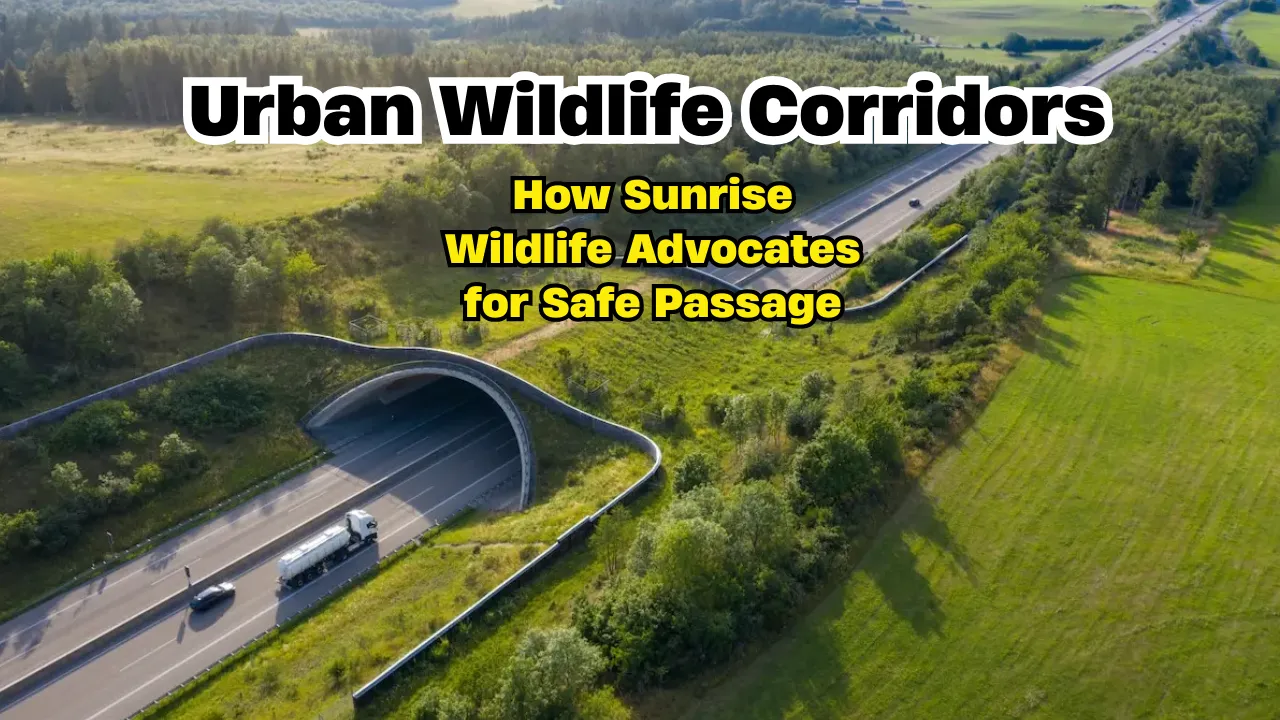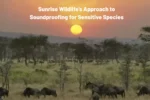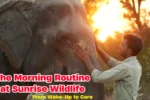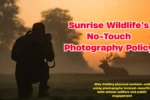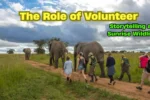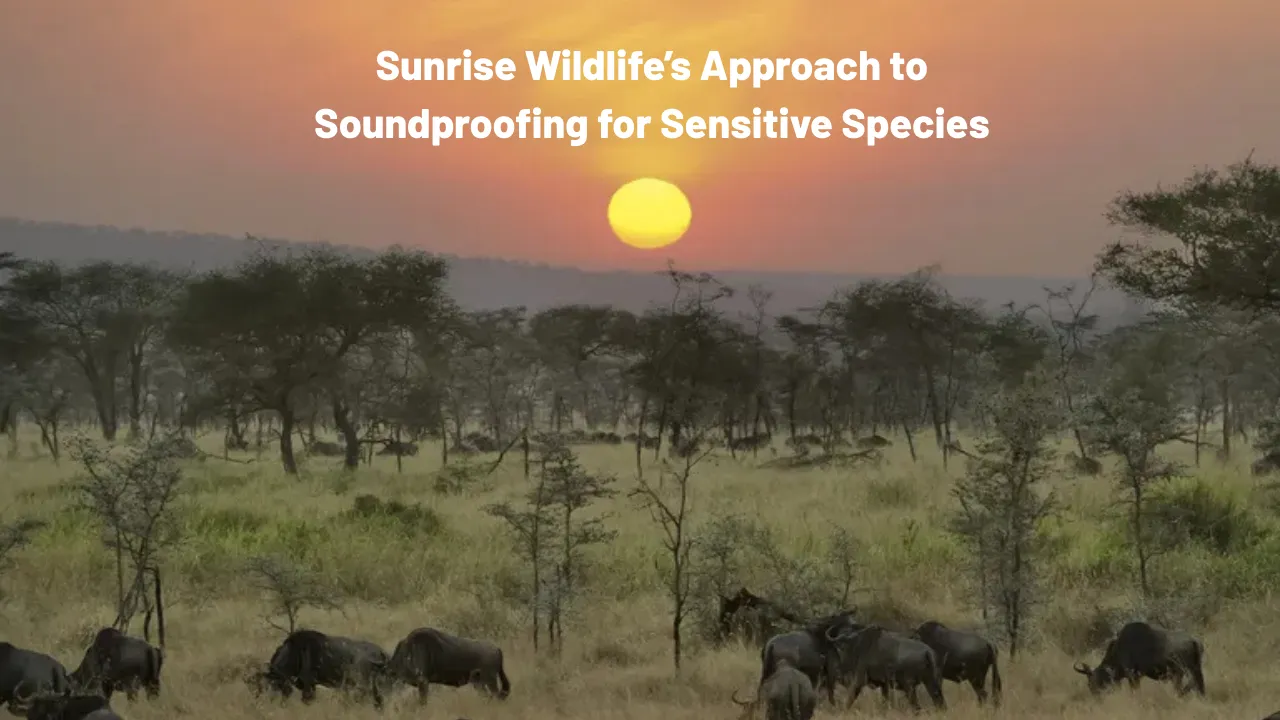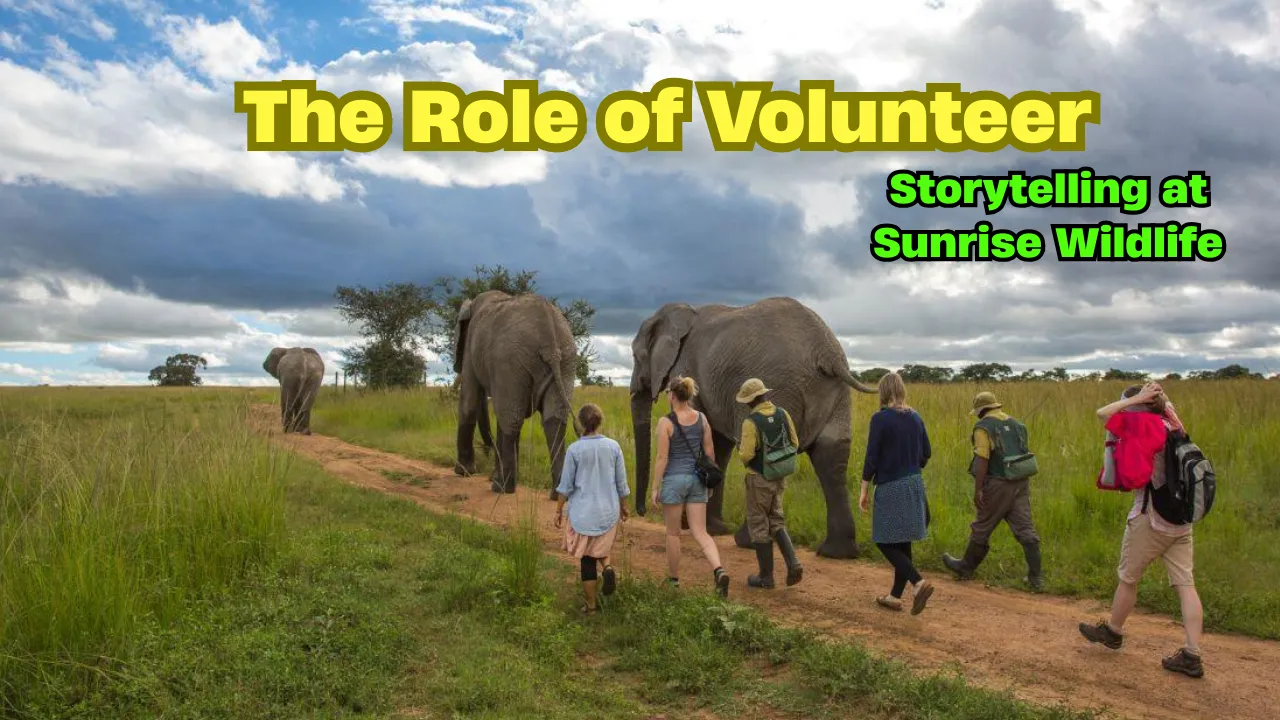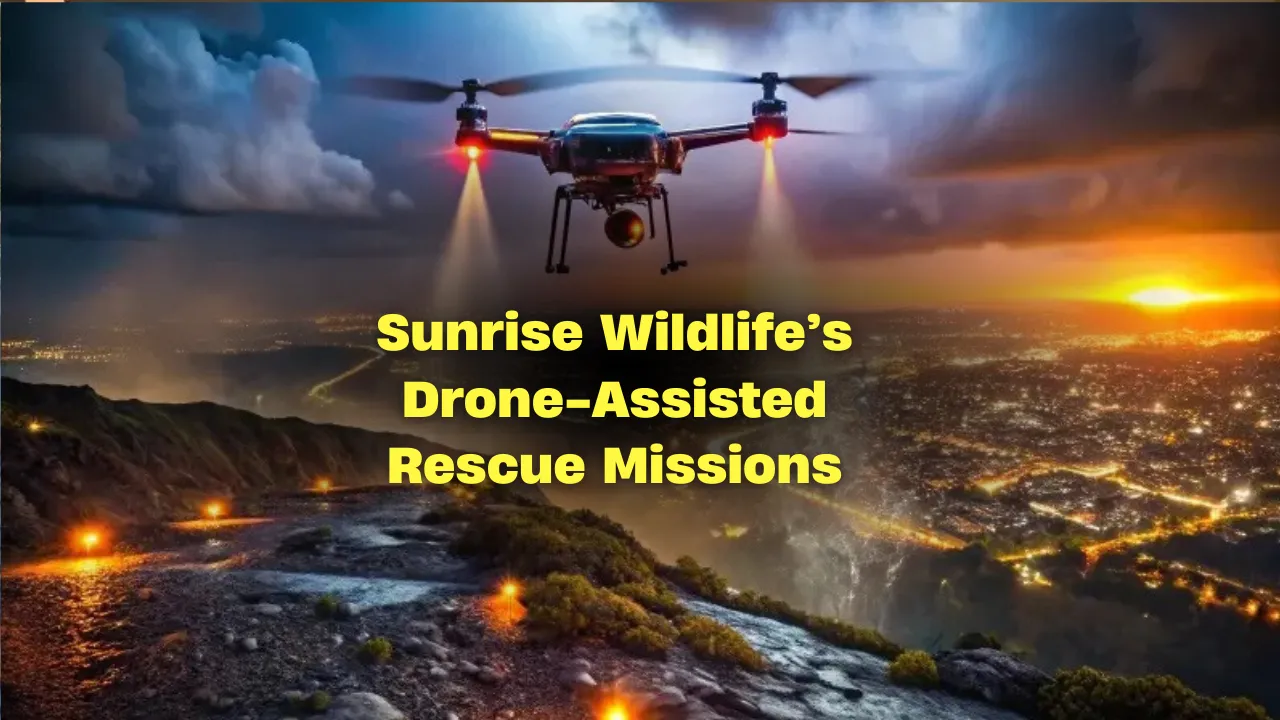Urban Wildlife Corridors are no longer optional—they’re essential for wildlife to survive in today’s fast-paced, concrete-heavy cities. As we continue to reshape landscapes for housing, roads, and commercial spaces, countless animal species find themselves trapped, isolated, or forced into dangerous crossings through human-dominated areas. The consequences are serious: loss of biodiversity, increasing roadkill incidents, and declining urban ecosystem health.
In this article, we’ll explore how Sunrise Wildlife, a dedicated environmental organization, is stepping up to protect local wildlife by pushing for safer, smarter passageways. Through collaboration with planners, policymakers, and residents, they are creating real change—linking green spaces, reducing barriers, and setting a new standard in how cities can live in harmony with nature.
Urban Wildlife Corridors: Vital Pathways for Sustainable Cities
Urban Wildlife Corridors are essential in connecting fragmented habitats within expanding cities. These green passageways support safe animal movement and ensure that species can access food, water, shelter, and mates without facing urban hazards. At their core, corridors are part of green infrastructure, promoting habitat connectivity and resilience in urban ecosystems. Sunrise Wildlife’s work in building and advocating for these corridors represents a significant step toward biodiversity protection and smarter urban planning. By embedding wildlife-conscious designs into city layouts, the center is making sure that growth doesn’t come at the expense of our planet’s most vulnerable creatures.
Overview of Sunrise Wildlife’s Corridor Strategy
| Key Area | Description |
| Planning Approach | Data-driven corridor designs using habitat and species mapping |
| Key Collaborators | City planners, landscape architects, ecological experts, local residents |
| Corridor Types | Green belts, wildlife bridges, tunnels, native plant-lined pathways |
| Community Role | Education, planting native vegetation, reducing fencing, volunteering |
| Main Goals | Improve safe passage, reduce roadkill, restore habitat connectivity |
Why Urban Wildlife Corridors Matter
Modern cities are built for people, not animals. Paved roads, tall buildings, and fenced properties interrupt natural landscapes and split habitats into disconnected patches. For wildlife, this creates physical and ecological barriers that make survival more difficult. From birds and foxes to turtles and deer, species rely on their ability to move between spaces for nesting, feeding, breeding, and seasonal migration.
Urban Wildlife Corridors allow animals to travel safely through city areas without risking collisions with cars or crossing human property. But their value goes beyond reducing roadkill. These corridors support the genetic diversity of species by preventing inbreeding, improve urban biodiversity, and even enhance the health of nearby green spaces. When corridors are effectively designed, they become lifelines for urban ecosystems and a powerful tool in wildlife conservation.
How Sunrise Wildlife Center Gets Involved
Sunrise Wildlife isn’t just talking about environmental action—they’re doing it. Their team brings a proactive, science-based approach to building Urban Wildlife Corridors. By gathering data on animal movement patterns, habitat types, and urban threats, they design safe passages that serve real ecological needs. This isn’t guesswork—it’s ecological planning grounded in field research.
They work with local governments and urban developers to identify critical crossing points. In some cases, they’ve influenced the design of underpasses or dedicated wildlife crossings during the planning stage of new roads. In others, they retrofit existing infrastructure—such as bridges or culverts—to better support animal movement. Their goal is to embed wildlife needs into the fabric of growing cities.
Educating the Public and Policy Makers
A crucial part of Sunrise Wildlife’s mission is public education. Without community support, even the best-designed corridors can fail. That’s why the center invests heavily in outreach. From school presentations to neighborhood clean-ups and municipal briefings, they teach people how green infrastructure can support both nature and human life.
They show residents how small changes—like planting native shrubs, removing unnecessary fencing, or creating small water features—can extend the corridor network. With better awareness, people start to view their backyards and streets not as isolated, but as part of a larger system that supports safe animal movement.
On the policy side, Sunrise Wildlife works to integrate corridor planning into zoning laws, construction permits, and long-term development strategies. Their aim is to normalize the inclusion of habitat connectivity in every stage of urban growth.
Real-Life Success Stories
One of Sunrise Wildlife’s most successful projects involved a fragmented woodland near a growing suburban area. A newly planned highway threatened to completely cut off two populations of red foxes and raccoons. Working closely with transportation authorities, Sunrise Wildlife proposed a green overpass—essentially a bridge covered with soil and vegetation—to allow animals to cross safely.
In another case, they collaborated with a high school to monitor turtle movement in a nearby wetland. Data from this study helped secure a grant to build a tunnel under a busy road. Since the tunnel’s completion, turtle fatalities in the area have dropped by over 80%.
These stories prove that well-placed urban wildlife corridors don’t just look good on paper—they save lives and strengthen communities.
Benefits of Wildlife Corridors in Cities
- Enhanced Biodiversity: Corridors allow multiple species to thrive, even in densely populated areas.
- Safer Urban Environments: Reducing wildlife-vehicle collisions protects both animals and drivers.
- Educational Value: Corridors create opportunities for environmental learning and student projects.
- Better Ecosystem Services: Connected green spaces improve air quality, reduce noise, and help manage urban heat.
- Higher Property Values: Homes near greenways and corridors often see increased desirability.
Key Features of Effective Urban Wildlife Corridors
- Location-Specific Design: Tailored to local species and geography.
- Native Vegetation: Encourages natural foraging and nesting behavior.
- Low Light & Noise Levels: Reduces stress and discourages avoidance behavior in animals.
- Connectivity to Major Habitats: Links important ecological areas, not just small parks.
- Human Interaction Minimization: Keeps wildlife pathways separate from high-traffic human zones.
Challenges and Solutions
Urban wildlife corridors face challenges, including limited space, competing development interests, and tight budgets. Still, Sunrise Wildlife proves that thoughtful ecological planning can overcome these issues. When space is limited, they recommend using utility easements or existing trail networks. In cases of budget shortfalls, they turn to community fundraising, grant applications, and volunteer labor to keep momentum going.
Another frequent hurdle is skepticism from stakeholders unfamiliar with biodiversity protection. Here, Sunrise uses hard data and clear visuals to make their case. They highlight cost savings from fewer road accidents and show how corridors can boost tourism and local engagement.
Future Goals of Sunrise Wildlife
Sunrise Wildlife aims to build a connected network of urban wildlife corridors across the region. By linking parks, nature reserves, and residential green spaces, they hope to create a safe, functional environment for wildlife movement across the city. Their upcoming projects include working with universities to develop tracking technology and collaborating with tech companies for better environmental impact forecasting.
Long-term, they envision a model that other cities can follow—a blend of sustainable cities, engaged communities, and thriving wildlife.
FAQs
What are urban wildlife corridors?
They are green pathways that allow animals to safely move through urban areas between habitats.
Why do cities need these corridors?
They reduce roadkill, support biodiversity, and improve ecological health in city landscapes.
Who builds and maintains wildlife corridors?
Organizations like Sunrise Wildlife collaborate with city planners, volunteers, and local governments.
Can small animals use wildlife corridors too?
Yes, corridors support a range of species—from birds and turtles to foxes and insects.
How can I support wildlife corridors in my neighborhood?
You can plant native species, reduce fencing, support local conservation groups, and educate others.
Final Thought
Urban Wildlife Corridors are not just solutions—they are commitments to building cities that respect and protect life in all its forms. Sunrise Wildlife is showing the world that it’s possible to grow communities while keeping nature connected and thriving. Their work is a reminder that with smart planning, strong partnerships, and community support, our urban future can still be wild—in the best possible way.
If you believe in protecting wildlife, start with your own surroundings. Share this story, plant a native tree, or join a local cleanup. Every action counts when you’re part of a movement for real change.
